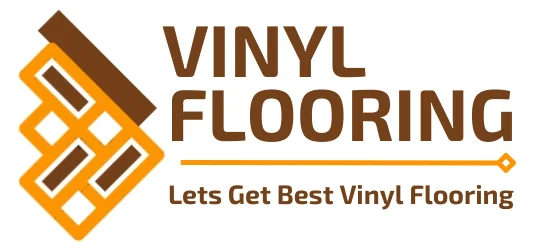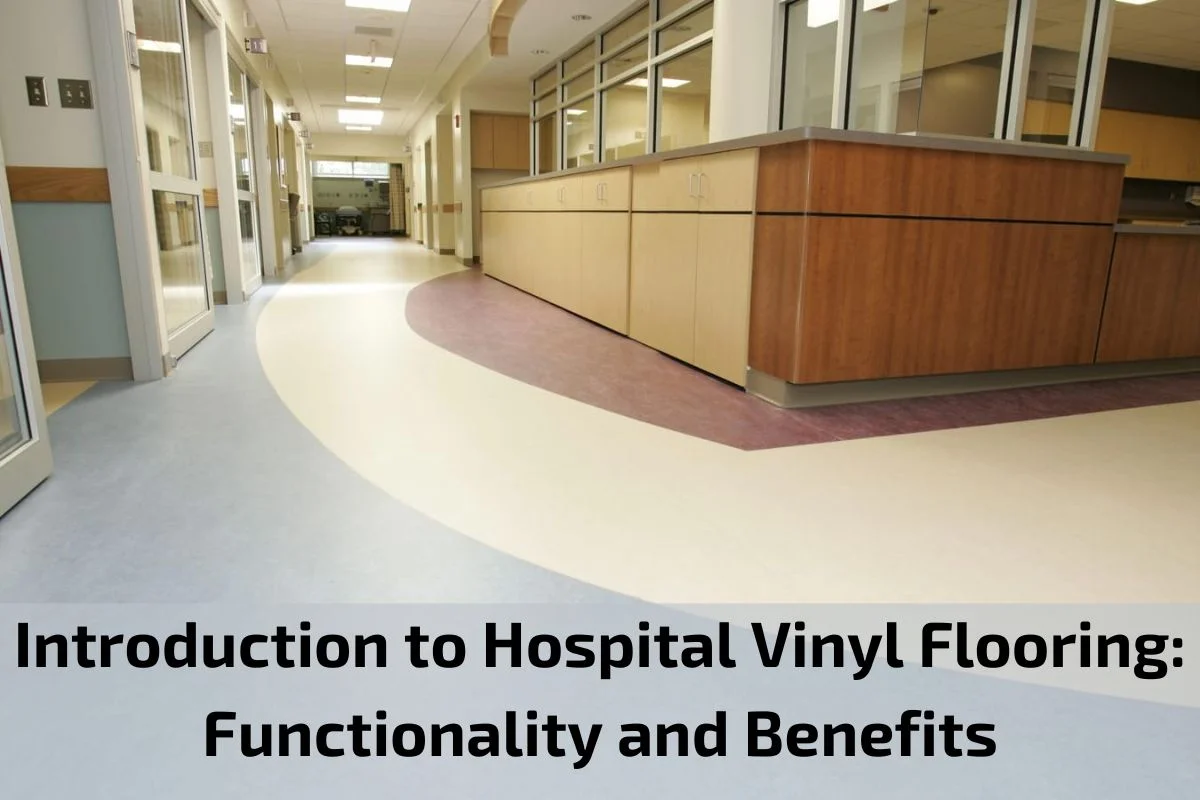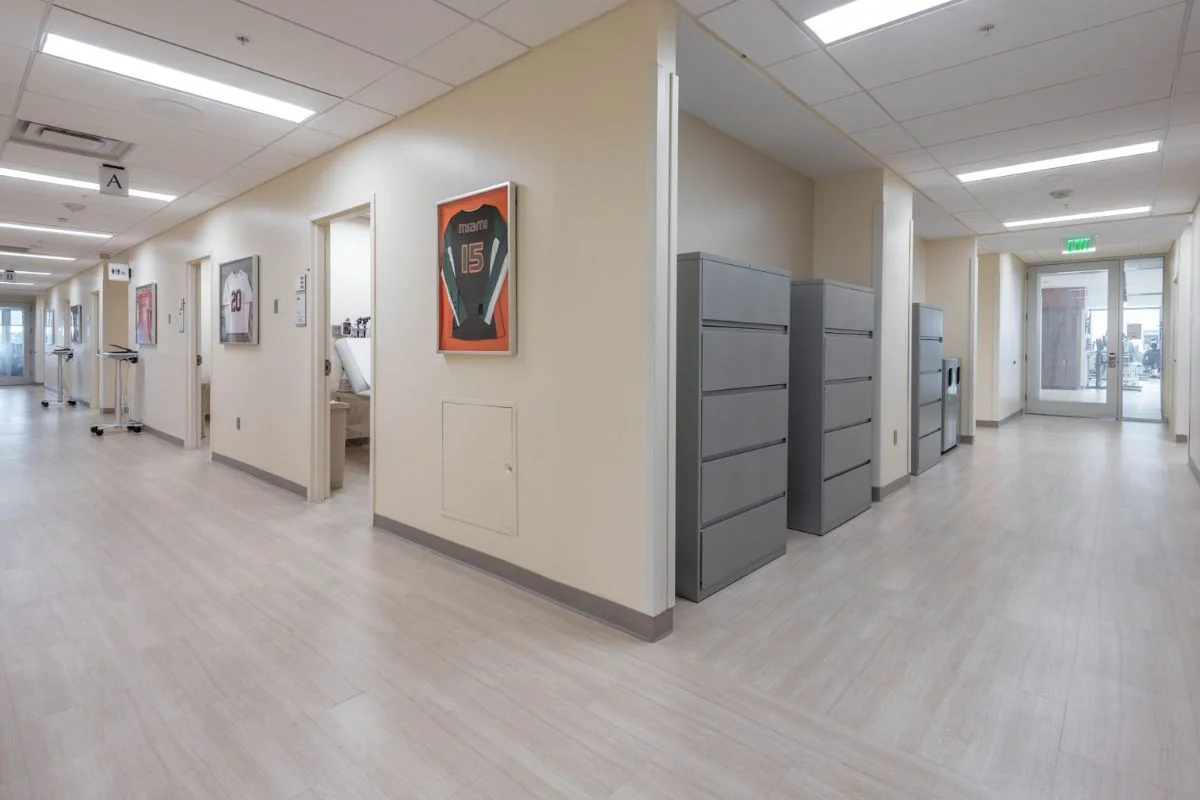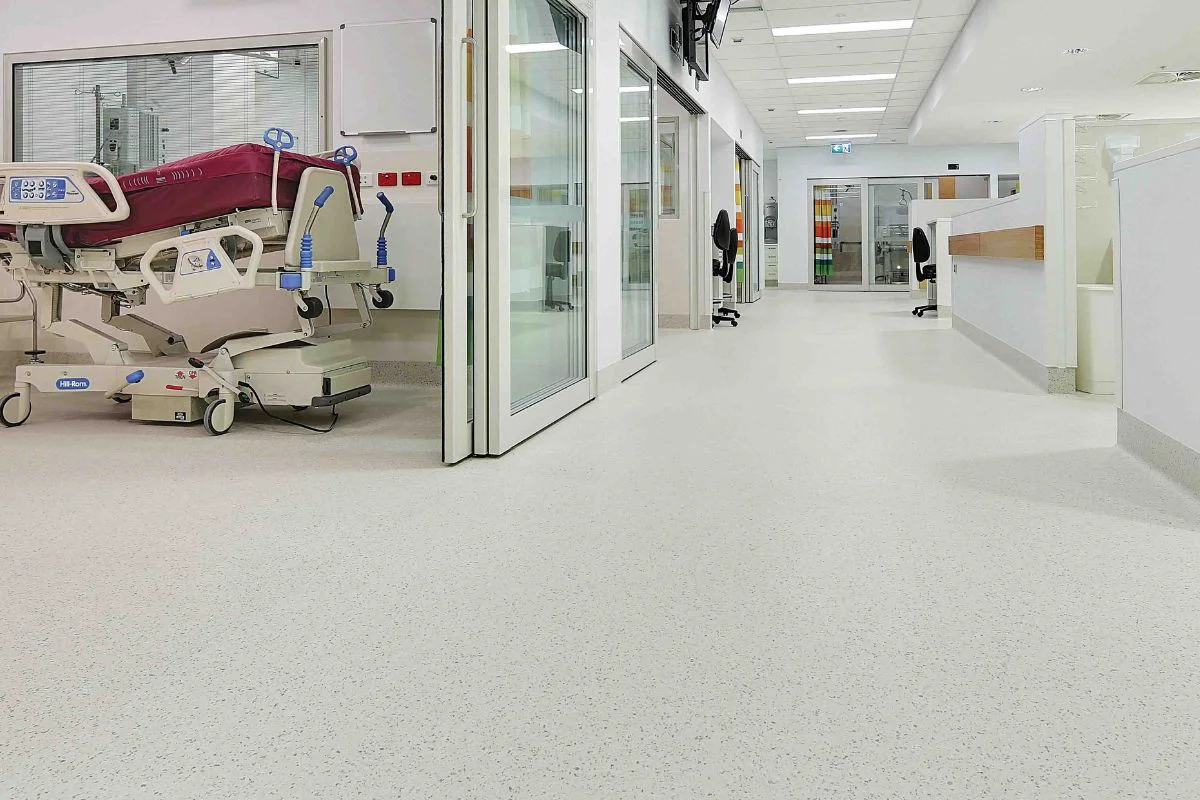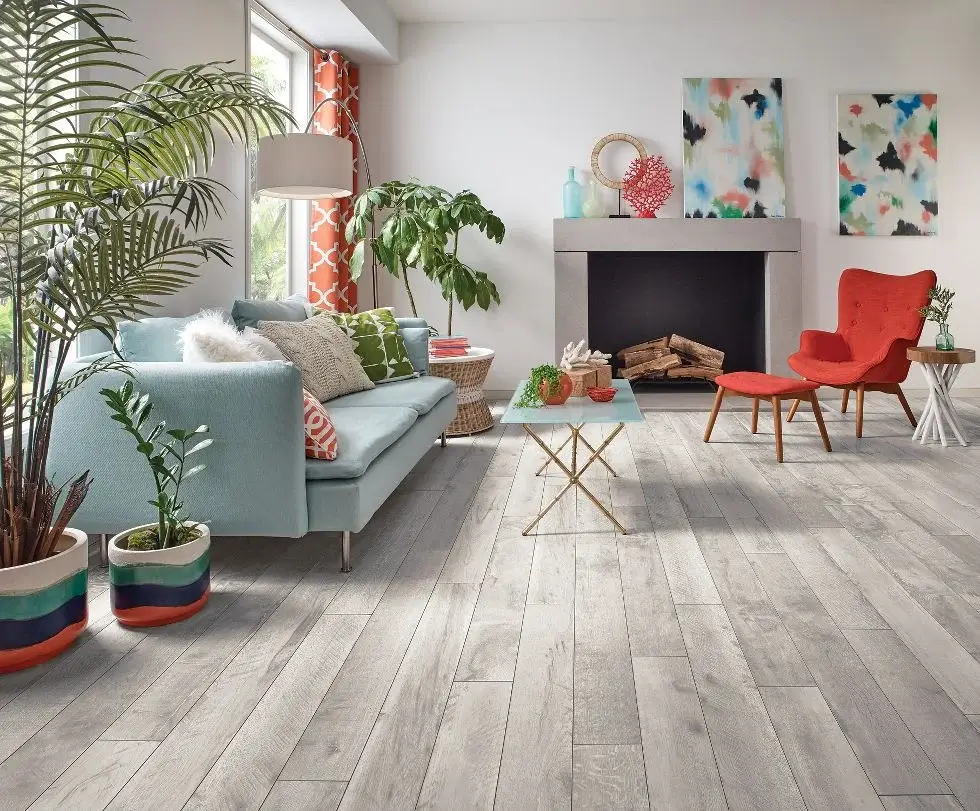Vinyl flooring has become an increasingly popular choice for healthcare facilities, including hospitals, due to its exceptional functionality and numerous benefits. In this article, we’ll explore the unique features of hospital vinyl flooring and delve into the advantages it offers in medical settings.
Vinyl flooring is renowned for its versatility, durability, and ease of maintenance, making it an ideal option for hospitals where cleanliness and hygiene are paramount. From operating rooms to patient wards, vinyl flooring provides a safe and sanitary environment while also offering aesthetic appeal and practicality.
Throughout this article, we’ll examine the specific functionalities and benefits of hospital vinyl flooring, highlighting its role in promoting patient safety, enhancing infection control measures, and contributing to the overall efficiency of healthcare facilities.
Overview of Hospital Vinyl Flooring
Hospital vinyl flooring is a specialized flooring option designed specifically for healthcare environments, including hospitals, clinics, and medical facilities. It is a preferred choice due to its exceptional durability, hygienic properties, and ease of maintenance. Hospital vinyl flooring is engineered to meet the unique demands of medical settings, where cleanliness, safety, and infection control are of utmost importance.
This type of flooring is typically made from polyvinyl chloride (PVC) resin, which is combined with other materials to enhance its performance and durability. Hospital vinyl flooring comes in various forms, including sheet vinyl, vinyl tiles, and luxury vinyl planks, offering versatility in design and installation options to suit different areas within healthcare facilities.
Hospital vinyl flooring is known for its seamless and smooth surface, which reduces the risk of bacteria and pathogens harboring in cracks or crevices. It is resistant to moisture, stains, and chemicals, making it easy to clean and maintain in sterile environments. Additionally, hospital vinyl flooring can withstand heavy foot traffic and rolling medical equipment without showing signs of wear and tear.
In healthcare settings, where patient safety is paramount, hospital vinyl flooring offers excellent slip resistance properties to prevent accidents and injuries. It also meets stringent regulatory standards for fire safety, chemical emissions, and ADA accessibility requirements, ensuring compliance with healthcare regulations and guidelines.
Overall, hospital vinyl flooring provides a hygienic, durable, and safe flooring solution for medical environments, contributing to the well-being of patients, staff, and visitors while maintaining a clean and sterile atmosphere essential for effective healthcare delivery.
Importance of Vinyl Flooring in Hospital Settings
Vinyl flooring plays a crucial role in hospital settings due to its numerous advantages and specific characteristics tailored to meet the unique demands of healthcare environments. Here are some key reasons why vinyl flooring is essential in hospitals:
Hygiene and Infection Control: Maintaining a clean and sterile environment is paramount in hospitals to prevent the spread of infections and diseases. Vinyl flooring’s smooth and non-porous surface makes it easy to clean and disinfect, reducing the risk of bacterial growth and contamination. Its seamless installation minimizes the presence of cracks and crevices where pathogens could hide, enhancing overall hygiene standards.
Durability and Longevity: Hospitals experience heavy foot traffic and constant use of medical equipment, which can take a toll on flooring surfaces. Vinyl flooring is renowned for its exceptional durability and resilience, capable of withstanding the rigors of daily wear and tear in high-traffic areas such as corridors, patient rooms, and operating theaters. Its robust construction ensures long-term performance, reducing the need for frequent repairs or replacement.
Safety Features: Patient safety is a top priority in hospitals, and flooring plays a critical role in preventing slips, trips, and falls. Vinyl flooring is engineered with slip-resistant properties, providing traction underfoot and reducing the risk of accidents, particularly in areas prone to spills or moisture. Additionally, vinyl flooring meets fire safety standards and contributes to creating a safe environment for patients, staff, and visitors.
Comfort and Acoustics: Hospital environments can be stressful for patients and staff, making comfort and noise reduction important considerations. Vinyl flooring offers underfoot comfort and cushioning, minimizing fatigue for healthcare professionals who spend long hours on their feet. Furthermore, vinyl flooring absorbs sound and reduces noise levels, creating a quieter and more peaceful atmosphere conducive to healing and recovery.
Design Versatility: Hospitals strive to create welcoming and healing environments that promote patient well-being and comfort. Vinyl flooring comes in a wide range of colors, patterns, and textures, allowing hospitals to customize their interiors and create aesthetically pleasing spaces. From calming and serene patient rooms to vibrant and energetic common areas, vinyl flooring offers design versatility to suit diverse healthcare settings.
Advantages and Disadvantage of Hospital Vinyl Flooring
Vinyl flooring in hospital settings offers a range of advantages and a few potential disadvantages, making it essential to weigh both sides when considering this flooring option:
Advantages:
Hygienic Properties: Hospital vinyl flooring is easy to clean and maintain, providing a smooth and non-porous surface that resists bacterial growth and contamination. This contributes to maintaining high standards of hygiene in healthcare environments.
Durability and Longevity: Vinyl flooring is highly durable and resilient, capable of withstanding heavy foot traffic and the use of medical equipment without showing signs of wear and tear. Its long-term performance reduces the need for frequent repairs or replacement.
Safety Features: Hospital vinyl flooring is engineered with slip-resistant properties, reducing the risk of slips, trips, and falls in healthcare settings. It also meets fire safety standards and contributes to creating a safe environment for patients, staff, and visitors.
Design Versatility: Vinyl flooring offers a wide range of design options, including various colors, patterns, and textures, allowing hospitals to customize their interiors and create visually appealing spaces that promote patient comfort and well-being.
Disadvantages:
Vulnerability to Damage: While vinyl flooring is durable, it can still be susceptible to damage from sharp objects or heavy impacts. Scratches, dents, and tears may occur, particularly in high-traffic areas or where medical equipment is frequently moved.
Environmental Concerns: Some vinyl flooring products may contain chemicals and additives that raise environmental concerns, such as volatile organic compounds (VOCs) emitted during installation or disposal. Hospitals should consider environmentally friendly options and adhere to sustainable practices.
Installation Challenges: Installing vinyl flooring in hospital settings may present challenges, especially when dealing with irregular subfloor surfaces or complex layouts. Proper installation techniques and professional expertise are necessary to ensure a seamless and durable flooring solution.
Cost Considerations: While vinyl flooring is generally cost-effective compared to other flooring options, the initial investment may still be higher than budget-friendly alternatives. Hospitals should carefully assess their budget constraints and long-term maintenance costs before selecting vinyl flooring.
Types of Hospital Vinyl Flooring
Hospital vinyl flooring comes in various types, each offering unique characteristics and benefits tailored to meet the specific requirements of healthcare environments. Here are the common types of vinyl flooring used in hospitals:
Sheet Vinyl Flooring: Sheet vinyl flooring is a seamless and homogeneous flooring option that comes in large rolls, offering easy installation and minimal seams. It provides a smooth and non-porous surface that resists moisture and bacterial growth, making it ideal for sterile environments such as operating rooms and patient wards.
Vinyl Tile Flooring: Vinyl tile flooring consists of individual tiles made from PVC material, typically featuring a printed design layer and a protective wear layer. Vinyl tiles offer design versatility, allowing hospitals to create custom patterns and layouts to enhance the aesthetic appeal of their interiors. They are suitable for areas with moderate foot traffic, such as hallways, reception areas, and administrative offices.
Luxury Vinyl Plank (LVP) Flooring: Luxury vinyl plank flooring replicates the look and texture of natural wood planks or stone tiles, providing a high-end aesthetic without the maintenance requirements of traditional materials. LVP flooring is durable, water-resistant, and easy to clean, making it suitable for healthcare environments where a warm and inviting atmosphere is desired, such as patient rooms and rehabilitation centers.
Antimicrobial Vinyl Flooring: Antimicrobial vinyl flooring is specially formulated to inhibit the growth of bacteria, fungi, and mold, providing an additional layer of protection against healthcare-associated infections. This type of vinyl flooring is designed with antimicrobial agents embedded in the wear layer, ensuring long-lasting hygiene and cleanliness in critical areas such as surgical suites, intensive care units, and isolation rooms.
Static Control Vinyl Flooring: Static control vinyl flooring, also known as electrostatic dissipative (ESD) flooring, is engineered to control static electricity and prevent electrostatic discharge (ESD) in environments where sensitive electronic equipment or devices are present. It helps protect patients, staff, and medical equipment from static-related hazards, making it suitable for laboratories, imaging facilities, and clean rooms.
Maintenance and Cleaning Guidelines
Proper maintenance and regular cleaning of hospital vinyl flooring are essential to preserve its appearance, longevity, and hygienic properties. Here are some guidelines for effectively maintaining and cleaning hospital vinyl flooring:
Daily Cleaning Routine: Implement a daily cleaning routine to remove surface dirt, dust, and debris from the vinyl flooring. Use a soft-bristled broom or a dry microfiber mop to sweep the floor and remove loose particles.
Damp Mopping: For more thorough cleaning, dampen a microfiber mop or cloth with a neutral pH cleaner approved for use on vinyl flooring. Avoid using abrasive or harsh chemicals that may damage the floor’s surface. Follow the manufacturer’s instructions for dilution ratios and application methods.
Spot Cleaning: Promptly clean up spills and stains to prevent them from setting into the vinyl flooring. Use a damp cloth or sponge with mild soap and water to gently blot the affected area. Avoid abrasive scrubbing or using ammonia-based cleaners, as they may cause discoloration or damage to the flooring.
Disinfection Protocols: In healthcare environments where infection control is critical, implement disinfection protocols to effectively eliminate harmful bacteria and pathogens from the vinyl flooring. Use EPA-approved disinfectants specifically formulated for use on vinyl surfaces. Follow the manufacturer’s instructions for proper dilution, contact time, and application methods.
Avoid Excess Moisture: Vinyl flooring is resistant to moisture, but excessive water exposure can damage the floor’s adhesive and cause warping or delamination. Use minimal water when mopping the vinyl flooring, and promptly dry any excess moisture with a clean, dry cloth or mop.
Use Entrance Mats: Place entrance mats at hospital entrances and high-traffic areas to trap dirt, moisture, and debris before it reaches the vinyl flooring. This helps prevent scratches, abrasions, and premature wear on the floor’s surface.
Avoid Heavy Furniture Dragging: To prevent scratches and damage to the vinyl flooring, avoid dragging heavy furniture or equipment across the floor’s surface. Use furniture pads or sliders under the legs of heavy objects to protect the flooring from scratches and indentations.
Regular Maintenance Inspections: Conduct regular inspections of the vinyl flooring to identify any signs of damage, wear, or deterioration. Address any issues promptly to prevent further damage and ensure the longevity of the flooring.
Conclusion
In conclusion, hospital vinyl flooring stands as a reliable and indispensable flooring solution for healthcare environments, offering a multitude of benefits including durability, hygiene, safety, and design versatility. Its seamless and non-porous surface, along with its resistance to moisture, stains, and chemicals, make it an ideal choice for hospitals seeking to maintain high standards of cleanliness and infection control.

